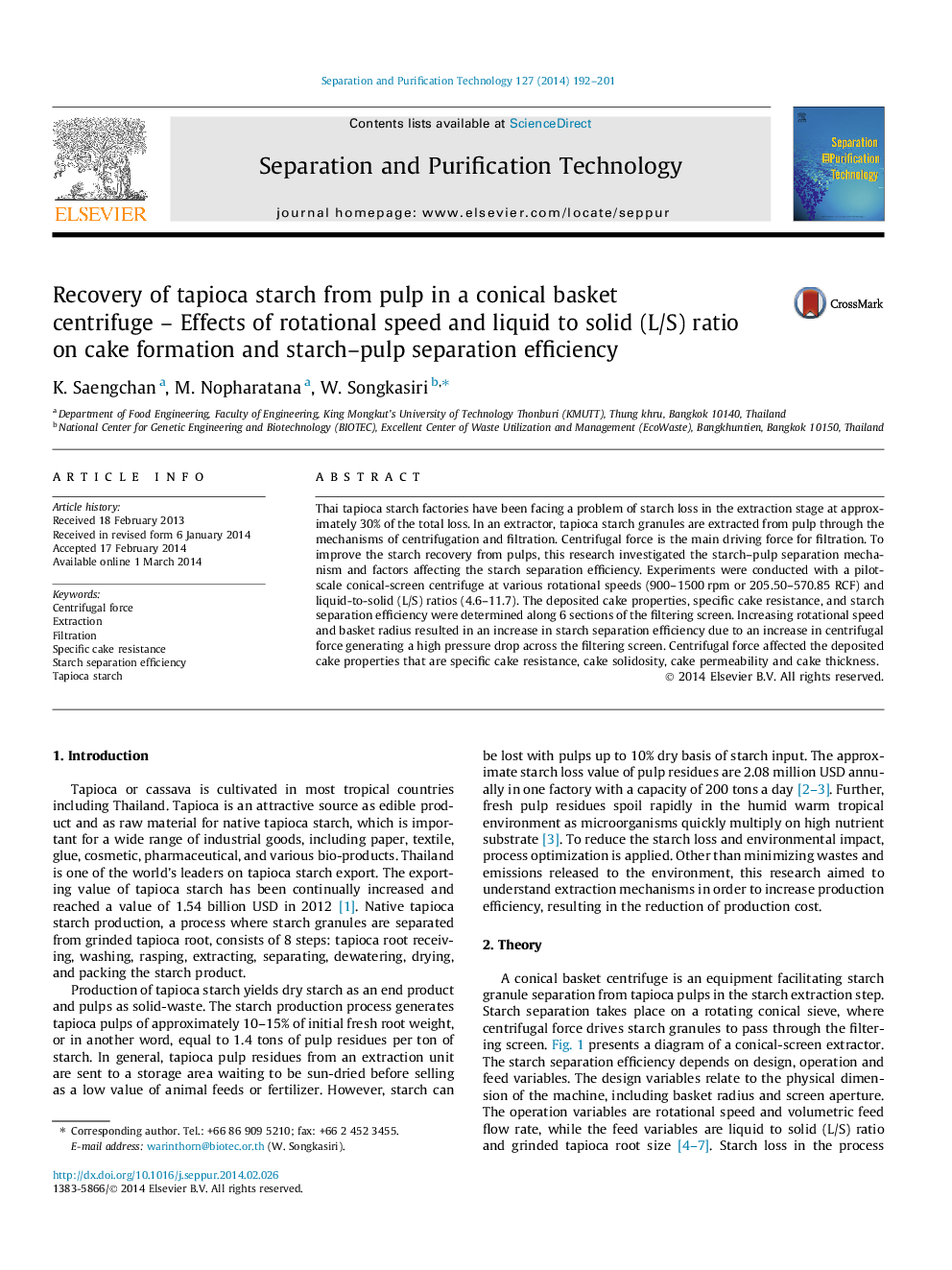| Article ID | Journal | Published Year | Pages | File Type |
|---|---|---|---|---|
| 641368 | Separation and Purification Technology | 2014 | 10 Pages |
•Results contributed the guideline optimizing the extractor’s design and operation.•The separation efficiency depends on the filtrate and deposited cake properties.•As RCF, L/S ratio and basket radius increased, the separation efficiency increased.•The 3 sections of filtering screen were feed, transition, and drainage section.
Thai tapioca starch factories have been facing a problem of starch loss in the extraction stage at approximately 30% of the total loss. In an extractor, tapioca starch granules are extracted from pulp through the mechanisms of centrifugation and filtration. Centrifugal force is the main driving force for filtration. To improve the starch recovery from pulps, this research investigated the starch–pulp separation mechanism and factors affecting the starch separation efficiency. Experiments were conducted with a pilot-scale conical-screen centrifuge at various rotational speeds (900–1500 rpm or 205.50–570.85 RCF) and liquid-to-solid (L/S) ratios (4.6–11.7). The deposited cake properties, specific cake resistance, and starch separation efficiency were determined along 6 sections of the filtering screen. Increasing rotational speed and basket radius resulted in an increase in starch separation efficiency due to an increase in centrifugal force generating a high pressure drop across the filtering screen. Centrifugal force affected the deposited cake properties that are specific cake resistance, cake solidosity, cake permeability and cake thickness.
